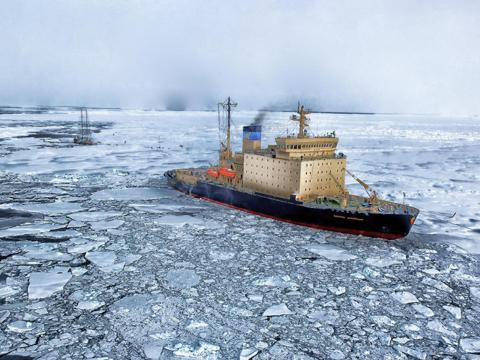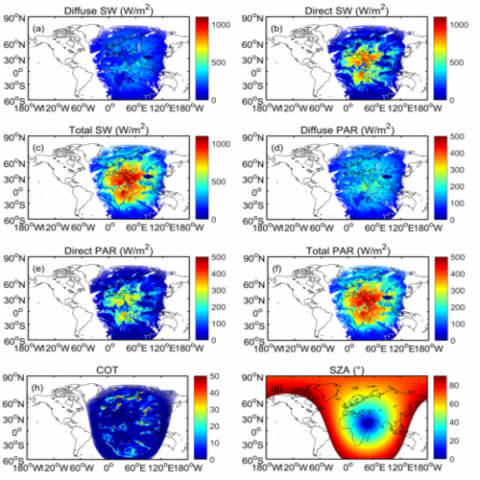The Community Land Model (CLM) is an effective tool to simulate the biophysical and biogeochemical processes and their interactions with the atmosphere. Although CLM Version 5 (CLM5) constitutes various updates in these processes, its performance in simulating energy, water and carbon cycles over...
Filter results
Category
- (-) Earth System Science (138)
- (-) Computational Mathematics & Statistics (7)
- (-) Visual Analytics (6)
- (-) Solar Energy (2)
- (-) Grid Analytics (1)
- Scientific Discovery (311)
- Biology (202)
- Human Health (102)
- Integrative Omics (72)
- Microbiome Science (44)
- Computational Research (25)
- National Security (22)
- Computing & Analytics (15)
- Chemistry (10)
- Energy Resiliency (10)
- Data Analytics & Machine Learning (9)
- Materials Science (7)
- Chemical & Biological Signatures Science (5)
- Renewable Energy (5)
- Weapons of Mass Effect (5)
- Atmospheric Science (4)
- Coastal Science (4)
- Data Analytics & Machine Learning (4)
- Ecosystem Science (4)
- Plant Science (3)
- Cybersecurity (2)
- Distribution (2)
- Electric Grid Modernization (2)
- Energy Efficiency (2)
- Energy Storage (2)
- Grid Cybersecurity (2)
- Bioenergy Technologies (1)
- Computational Mathematics & Statistics (1)
- High-Performance Computing (1)
- Subsurface Science (1)
- Terrestrial Aquatics (1)
- Transportation (1)
- Wind Energy (1)
Tags
- Omics (22)
- Soil Microbiology (22)
- sequencing (13)
- Genomics (10)
- Metagenomics (10)
- Microbiome (8)
- Fungi (6)
- High Throughput Sequencing (6)
- Imaging (6)
- Mass Spectrometry (6)
- Mass Spectrometer (5)
- metagenomics (4)
- Microscopy (4)
- Sequencer System (4)
- Sequencing (4)
- soil microbiology (4)
- Spectroscopy (4)
- Viruses (4)
- Climate Change (3)
- IAREC (3)
- metabolomics (3)
- PerCon SFA (3)
- Proteomics (3)
- Synthetic Biology (3)
- Data Analysis (2)
- Lipidomics (2)
- microbiome stability (2)
- omics (2)
- Output Databases (2)
- species volatility (2)
Showing 136 - 150 of 154
Person
Earth Scientist Emily Graham is an quantitative ecosystem ecologist in the Biological Sciences Group at PNNL and is part of the Ecosystem Science Team. She is co-principal investigator of the Subsurface Biogeochemical Research Science Focus Area (SFA) and a key member of PNNL’s soil microbiome SFA...
Category
Publication
The novel fungal strain, Fusarium sp. DS 682, was isolated from the rhizosphere of the perennial grass, Bouteloua gracilis , at the Konza Prairie Biological Station in Kansas. This fungal strain is common across North American grasslands and is resilient to environmental fluctuations. The draft...
Category
Coastal landscapes are increasingly exposed to seawater due to sea level rise and extreme weather events. The biogeochemical responses of these vulnerable ecosystems are poorly understood, limiting our ability to predict how their role in global biogeochemical cycles will shift under future...
Category
Datasets
1
The soil microbiome is central to the cycling of carbon and other nutrients and to the promotion of plant growth. Despite its importance, analysis of the soil microbiome is difficult due to its sheer complexity, with thousands of interacting species. Here, we reduced this complexity by developing...
Category
As part of the Pacific Northwest National Laboratory’s (PNNL) Science Focus Area program, we are investigating the impact of environmental change on microbial community function in grassland soils. Three grassland soils, representing different moisture regimes, were selected for ultra-deep...
Category
Predicting phenotypic expression from genomic and environmental information is arguably the greatest challenge in today’s biology. Being able to survey genomic content, e.g., as single-nucleotide polymorphism data, within a diverse population and predict the phenotypes of external traits, represents...
Category
Soil microorganisms play fundamental roles in cycling of soil carbon, nitrogen, and other nutrients, yet we have a poor understanding of how soil microbiomes are shaped by their nutritional and physical environment. In this study, we investigated the successional dynamics of a soil microbiome during...
Category
The direct and diffused components of downward shortwave radiation (SW), and photosynthetically active radiation (PAR) at the Earth surface play an essential role in biochemical (e.g. photosynthesis) and physical (e.g. energy balance) processes that control weather and climate conditions, and...
Category
Publication
Soil respiration (Rs), the flow of CO2 from the soil surface to the atmosphere, is one of the largest carbon fluxes in the terrestrial biosphere. The spatial variability of Rs is both large and poorly understood, limiting our ability to robustly scale it in space. One factor in Rs spatial...
Category
The high temporal variability of the soil-to-atmosphere CO2 flux (soil respiration, RS) has been studied at hourly to multiannual timescales, but remains less well understood than RS spatial variability. How RS fluxes vary and are auto-correlated at various time lags has practical implications for...
Category
Some of the most rapid environmental changes on the planet are experienced in high-latitude regions. These changes affect all Earth system components, including the ocean, atmosphere, cryosphere, and marine and terrestrial ecosystems, and have both regional and global implications. The main...
Category
Datasets
3
The long-term goals of this scientific focus area (SFA) are to develop flexible and extensible modeling capabilities that capture the dynamic multiscale interactions among climate, energy, water, land, socioeconomics, critical infrastructure, and other sectors and to use these capabilities to study...
Category
Datasets
8
Accurate characterization of the global downward shortwave (SW) and photosynthetically active radiation (PAR) is fundamental for Earth system modeling and global change research. Combined with a machine-learning method, we used the Earth Polychromatic Imaging Camera (EPIC) data onboard the Deep...
Category
Datasets
54
The objective of Terrestrial-Aquatic Interface (TAI) research in PREMIS is to understand the factors governing C and nutrient movement and transformation through the TAI, and their sensitivities to inundation and salinity within coastal watersheds.
Category
Datasets
1





